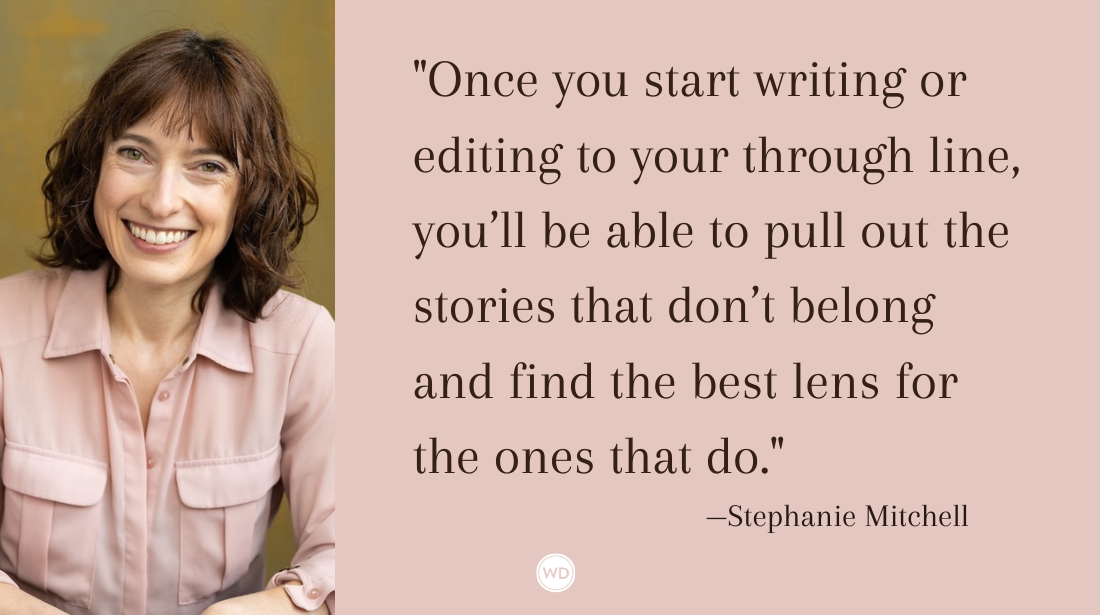Writing On the Rails: Survival Tips for Traveling Authors
After years of crisscrossing the country by car, plane, train, bus, and even on foot for stretches, one of my favorite modes of transportation remains the railroad. Yes, it can…
After years of crisscrossing the country by car, plane, train, bus, and even on foot for stretches, one of my favorite modes of transportation remains the railroad. Yes, it can be a little shabby, but not nearly as bad as some bus stations I've seen. Plus, it has a great literary history: Jack Kerouac and his Beat buddy Neal Cassady were both railroad employees, and numerous works taking place on the rails continue to thrill us, such as Christie’s Murder onThe Orient Express, Theroux’s The Great Railway Bazaar, and Highsmith’s Strangers on a Train. And that’s just the tip of the iceberg. Hunter S. Thompson once amusingly wrote, “Many fine books have been written in prison,” and I believe that many fine books, stories, poems, and articles have been written on the gently rocking cars of the railway. I've enjoyed some excellent writing sessions during my railway jaunts from New York City to destinations far and wide (mostly New England, but I’ve traveled as far as Texas by train), and I’ve picked up a few pointers that might make your own writing-on-the-rails experience a little more enjoyable. Some of these are common sense tips, but hopefully you find one or two items below that help make your trip more productive.
Have a “Bug-Out Bag”
Like most travelers, I stow my non-essential luggage overhead or leave it in the good hands of the porter (if there is one) and I keep my writerly items nearby in my “Bug-Out Bag”: a laptop with power cable, notepad, pens, a couple of books, iPod, phone, phone charger, and any research materials (if needed). I’ll talk food/drinks later, but these are the basics if you’re going to be traveling for more than an hour or two. If you bring just a laptop, you may find yourself in a romper-room of a train unable to concentrate, or if you bring just a book and notepad, you may find yourself in a nice quiet car with all the time in the world to tinker with your novel. Be prepared and bring enough tools and entertainment for any situation.
I try to keep this bag as small and light as possible because it’s going to take up lap or foot space when you’re sitting for hours on end, and it’s going to be the thing you grab first if you need to get off the train in an emergency. Yes, I know they say leave everything behind, but I assure you, I’m not the only writer who would fight flame, flood, war, and famine to rescue an unfinished manuscript.
And make sure your phone and laptop are charged up because not all trains have power outlets. I primarily ride NYC’s Metro-North railway and Amtrak, the former lacking outlets in every seat, the latter having them only by the window seat. Which leads me to…
Seat Selection
When selecting a seat, be aware of where the sun will fall as you travel. Example: If you’re heading due north in the morning, you might want to sit on the left side of the train to avoid the glaring morning light coming through the right side. Traveling due west? Sit on the right side to avoid the southern sun as much as possible. Almost no trains I’ve used in my 34 years have had curtains or draw-down shades like an airplane, so be prepared for sunlight.
As for where on a car to sit…I’d suggest avoiding the bathroom, for obvious reasons.
I always aim for the window seat, and I pick this seat for very specific reasons. The aforementioned power outlet location is one. Nothing is more awkward than having to reach over or around someone to plug in your dying laptop, although you should be prepared for someone to do the same to you when you’ve nabbed the window seat.
Second, the view can be inspiring. Need to describe a town or countryside in your story? Keep your pen handy and take notes. I love all of the little towns along the Hudson River, and you get an up-close view of each station and their waterfront areas on the line between New York City and Albany.
Third, when you’re in the window seat, you only (in theory) have one person you might have to deal with directly—the person beside you. If you’re in the aisle seat, you have the person next to you, the person across the aisle, people walking past you over and over, and those kitty-corner ahead and behind chatting and fumbling and distracting you. This may also happen by the window in a particularly noisy car, but you have a better chance of avoiding most direct contact when you’re by the window. And speaking of noise…
Noise Pollution
Fair warning: I am a childless writer, so I’m a bit biased and narrow-minded when it comes to traveling in the presence of children. I’m not a fan, and I cannot count the number of crying babies and inattentive parents I have imagined exiling from the train in various creative ways. Granted, yes, some poor little kids are starving or sick or frightened, and I sometimes think of my nieces and nephews and take pity, but other cookie crunchers can shout and scream for hours on end for no discernable reason and they will destroy your creative output.
It’s in your best interest to not blow your top and end up serving a nickel in the county pen, so I suggest you:
- Move your seat to a quieter car, which is possible on many trains, but you may not find an ideal seat once things begin filling up. Some trains, though, have cars specifically designated as no talking/no noise cars. This is also referred to as Heaven.
- Plug in those ear-buds and play some soothing instrumental music, the sounds of a rainstorm, or heck, even some AC/DC to drown out the noise and crying around you. Remember, "Rock & Roll ain't noise pollution…"
- Apply duct-tape to their…no, wait, that’s a surefire way to end up in jail (DON'T do that, although you may want to apply the tape to your own ears…might not be a bad idea). Instead, and if you have a heart of gold, you might want to ask if the parent struggling with the child needs a hand. They may say no, but they might need just a few minutes of help to get things in order, and doing so might rescue them and save the day for everyone else within earshot. You never know.
Usually, when things are too loud for writing, I stick with my iPod, filled to the brim with music and podcasts to get through those bouts of crying kids, young hedge-fund analysts talking to everyone they can about their salary (this happens more than you’d imagine), or people who cannot pry their cell phone from their ear. What, afraid to be alone with your thoughts for more than 10 minutes? Seems like it. Music has brought down my blood pressure more times than I can count, so don’t leave home without it.
Creature Comforts
Some of you may not want to leave home without water and at least one snack. I left this out of my Bug-Out Bag only because many long-distance trains have snack cars with very basic selections of sandwiches and drinks, but not all do (short runs almost never do). Find out ahead of time, because if the train does offer food, that’s one less thing to pack beforehand. And even though it may be more expensive, I’m a buy-on-the-go kind of traveler. I think it adds to the adventure to scrounge from whatever’s available aboard the train (usually meager…this isn't The Darjeeling Limited) or at the station, but some of you may want to be a little more prepared. Probably wise.
Sleeping on a noisy train may also be impossible, but I find sleeping in a quiet train relaxing and easy to do. Yes, my parents had to drive me around the block to get me to sleep—I was that kid. If it moves, I can sleep in it, but if you have trouble, bring a pillow (most trains do not have them), inflatable neck brace, eye mask, etc. Of course, if you’re sleeping, you’re not writing…then again, on a five-hour trip, you may want a nap. Do what you need to do to get comfy.
I suggested bringing two books because if there are delays and you burn through one, you don’t want to look down and realize you only have the greasy, dog-eared travel magazine to read and re-read over the next three hours when you’re taking a break from your writing. I shiver at the thought.
And if you want to watch a movie, please plug in a headset. Parents, ditto for your kids. No one wants to hear your tots watch Frozen five times in a row from Boston to Chi-Town.
Writing Effectively
Here’s where the wheel meets the rail, so to speak. When the stars align and you get a relatively quiet car, a long stretch of straight track, and you know just what you want to say, you can get a ton of inspired writing done. One of the biggest questions at this point is: How do you prefer to write? I work from a laptop, but the real-world application of writing on one’s lap can get unrealistic really fast. My laptop gets scalding hot over a five-hour trip. Heck, it’s gets toasty after a 90-minute jaunt, too.
Pull down the folding tray, you say? Good idea, but I’ve encountered many a rail rider who plopped down (some quite literally throwing themselves into the seat) and cranked back the seat to recline as if they were trying to tackle the game winner in their glory days back in Pop Warner football. This sends the fold-down tray right into your solar plexus, or at least it does when I ride Amtrak. And I’m not a big dude, just your average-joe-waist-size writer, so if you come in the extra-lovin’ size, this could be a very big problem. I’d move seats if you can. Otherwise, I’d use a pillow, scarf, your Bug-Out Bag, or a jacket so you can to rest the laptop on your lap. It may not be perfect, but if you’re on a roll, don’t stop just because someone needs that 14% more recline in order to catch some Z’s.
You can also find a seat at the end of the car, that area that has two rows facing each other. Those often have fold-out trays that come out of the armrest and no one can shove it around on you. But then you have to stare someone in the face the whole ride. This could either be the most beautiful person in the world or the most frightening, and either could be a distraction.
Also note that you won’t have a lot of extra space no matter where you sit, so if you have a bunch of folders with research papers and notepads, outlines and character studies, you might find yourself juggling a pile of paper while also typing. It can get frustrating. You could stick them in the seat pocket ahead of you, but learn from my mistake: I have twice, TWICE, left a manuscript I printed out to proof or a folder of notes for a novel in the pocket, and Amtrak wasn’t able to find either lost item. No amount Alka-Seltzer (or as book-lover Bernard Black calls them, “Fizzy-Good, Make Feel Nice”) is going to cure that heartburn and heartache. Use those pockets if you must, but be careful.
I also find that if you plan ahead and you know exactly what you want to work on before you fold down that tray and begin typing, it will help you stay productive. Writing on a train can often come in bursts due to distractions, so if you’re going to wing it, you may just get warmed up when you have to stop and start all over again. Be prepared going in and fire away the first chance you get.
You can find more effective writing tips for authors on the go in You’ve Got a Book In You by Elizabeth Sims and Writer With a Day Job by Aine Greaney. Check them out! They’re both chock full of quick tips and inspirational write-wherever-you-can ideas.
Amtrak Residency
And finally, the Amtrak Writer's Residency. Most of you have likely heard of this by now, but Amtrak has a program for authors who want to work on the go. I have yet to apply for this, and I don't know all of the finer points of the residency, but I have friends on both sides of the fence concerning the quality of the program, some saying it’s a wonderful option for the traveling writer, and others telling me that they think it's a scam and falls well short of promises. I don’t know which is true, but I may yet apply. Two writer friends who applied and were rejected received a 15% discount coupon toward their next ticket. Not a bad consolation prize, considering the price of a ticket isn't getting any cheaper. I cannot say that will happen every time, though, and I highly advise you to read the fine print. Don't allow anyone to take advantage of your work just for a free ride to Detroit.
Have any of you participated in the Amtrak Residency? If so, feel free to leave your opinions below, along with any other writing tips you might have for authors on the go!
--
James Duncan is a content editor for Writer's Digest Books, and is the founding editor of Hobo Camp Review: Poetry & Prose from the Road. A lover of all things noir, James resides in New York City, dreams of the days of Humphrey Bogart and Edward Hopper, and is the author of the short story collection The Cards We Keep and the upcoming poetry collection Berlin. For more, visit www.jameshduncan.com.









